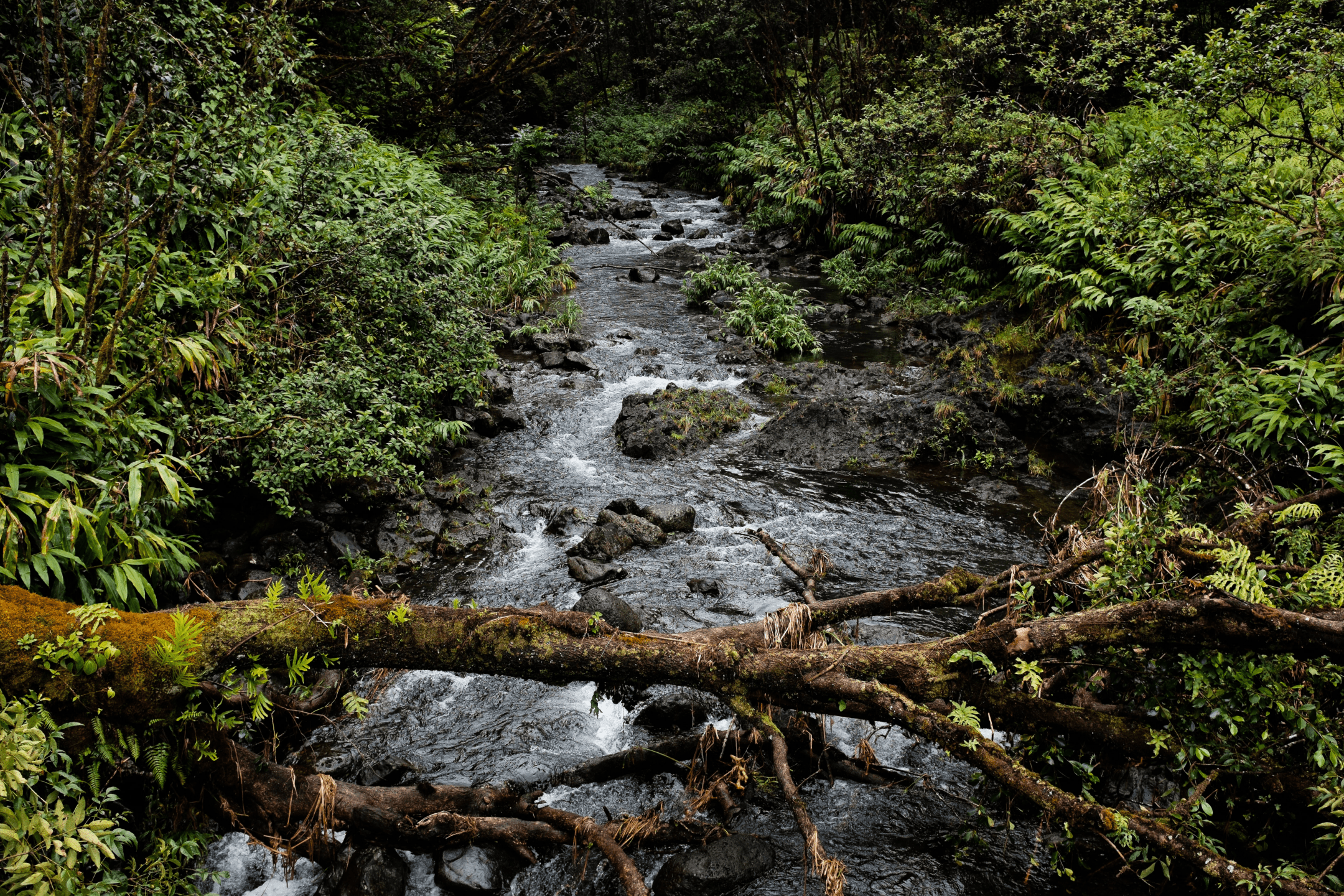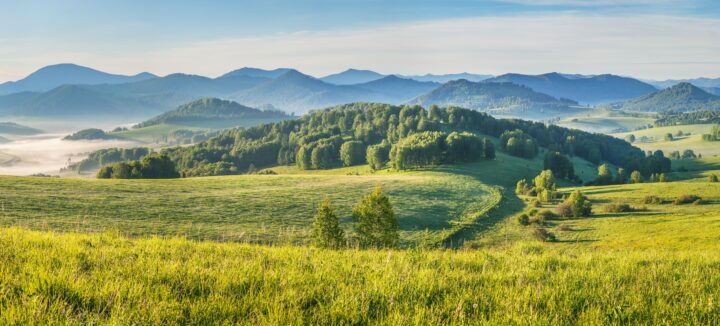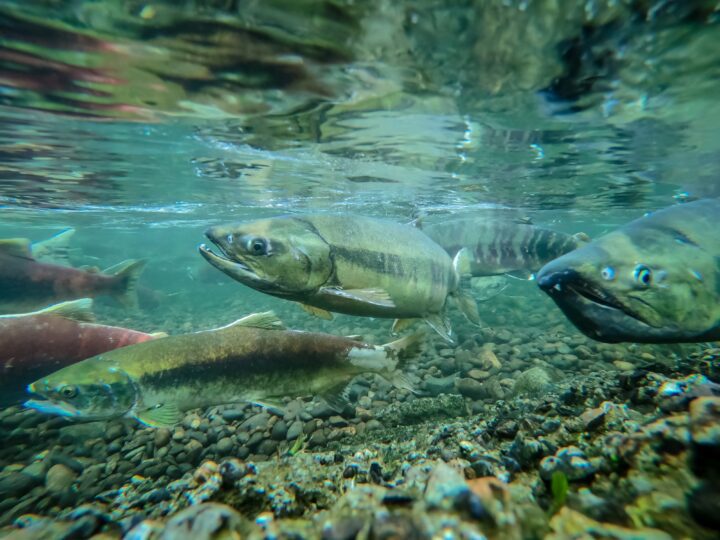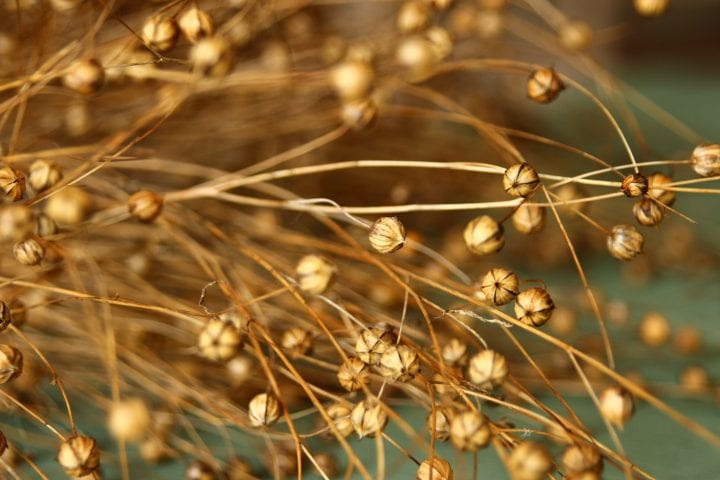Tall, wide trees in the forests of the Pacific Northwest serve as nurse logs to their seedlings after they fall, providing decades of water and nutrients as they slowly decay.
“In the coniferous forests of the north-west coast of America, the trees – Sitka spruce, hemlock and Douglas fir – may grow over two hundred feet high and they cut out most of the light. There is enough, however, to sustain ferns and other shade-loving plants, and the soil is so rich that they form a dense ground-cover through which you wade waste high. But beneath them, on the surface of the soil, it is very dark indeed. Seedlings, even if they were able to germinate, would not be able to gather enough light for them to photosynthesise. How then, can the giant trees regenerate themselves?
“They do so with the aid of their own dead bodies. The girth of an adult tree is such that the upper side of a fallen trunk remains above the ferns [as does the upright stump]. A seed from a neighbouring tree that lands on it can thus get sufficient light to germinate. Being perched there brings another advantage: the bark of the prostrate tree is very fibrous and holds moisture like a sponge to the young plant does not lack for water. As the seedling sprouts, it sends down roots. They grow over the flank of the log [or stump] and down into the rich soil beneath. As they gain strength, these roots thicken. While they are doing so, fungi are feasting in the wood of the log. Slowly it rots and begins to crumble away providing more sustenance for the young trees. After several decades, the log has been reduced to mouldering fragments. But the young seedlings still hold their position high above the ferns for their roots have now become so thick, they support them like stilts.” (Attenborough 1995:180)









